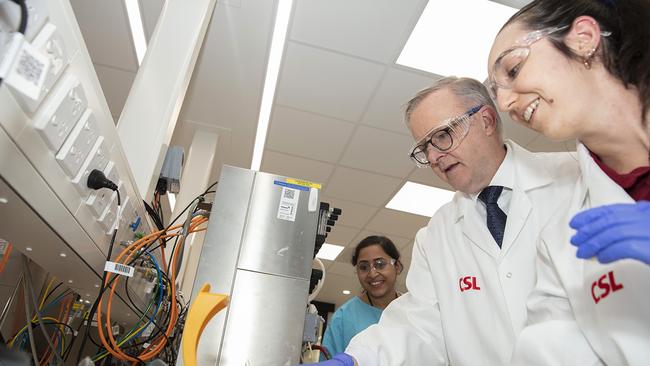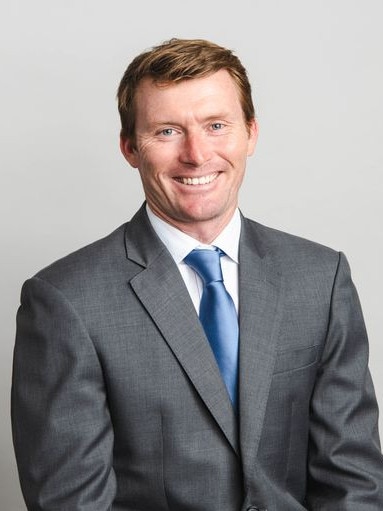The real reason so many Australian biotechs fail, according to one of sector’s top investors
Despite having one of the world’s top five centres of biomedical precincts, Charles Williams says Australia still fails to compete with the US and Europe when it comes to commercialisation.

Australia’s love of a bargain is hurting fledgling biotech companies, says a top investor who fears the nation risks missing out on a global boom in the sector.
His warning is despite Australia being home to one of the world’s biggest biotech companies, CSL, which has grown to a market value of $120.14bn since it was privatised in the 1990s.
But for every CSL, hundreds more biotech companies fail or are swallowed up by overseas big pharma firms, which has sparked the phrase “valley of death”, given the lack of funding the sector attracts to achieve billion dollar paydays and mass commercialisation.
Charles Williams, managing director of HB Biotechnology – an arm of investment firm Harper Bernays – says raw funding is only part of why homegrown biotech firms struggle to succeed.

While Melbourne has established a biomedical precinct at Parkville – becoming one of the world’s top five centres of its kind, Dr Williams says Australia still fails to compete with the US and Europe when it comes to commercialisation.
A key reason for this is a lack of understanding among investors, particularly on the value inflection points in the biotech sector.
“The frustrating thing from a capital markets point of view is a lot of investors because they a ‘generalist investors’ don’t appreciate how much capital is required for later-stage clinical trials,” said Dr Williams, who has a PhD in biomedical engineering.
He highlighted Immutep – a company specialising in immunotherapy which formerly counted Lucy Turnbull as one of its directors – as a prime example. The company raised $80m this year to complete a phase-three trial in non-small cell lung cancer treatment. It was also beginning a late-stage breast cancer treatment trial as well.
“They have a pipeline,” Dr Williams said.
“But I was hearing feedback around the market that they took too much money. If this was a company in the US seeking to do the same thing, that capital raise would be $US200m, not Aussie pesos, and no one would be complaining that they’re raising too much money to properly fund their trials.
“It’s just that sort of mentality that I scratch my head. I know people don’t like getting diluted. But one of the worst things you can do in this industry is have your companies undercapitalised and part fund your clinical trials. Because then everybody will gets annoyed that they have to raise money at a lower share price again.”
Investing in biotech is typically considered to be not for the faint hearted and risky. Not everything that enters clinical trials succeeds and capital is burned very quickly. But Dr Williams draws parallels with junior resource stocks.
“There are so many, let’s call them junior explorers, and quite frankly, they’re speculative. They are typically out in the west. So many of them fall over too. And it’s the business case and the challenges that are not dissimilar between the two.
“To be honest, it’s important that you find those assets in biotechnology and borrowing a little bit from the tech sphere is failing them fast. Don’t have these companies that keep raising capital, trying to flog a dead horse, if it doesn’t work, kill it and move on to the next one.
“You’re soaking up capital for something that could be really worthwhile.”
Just look at Mesoblast – the shares of which have dived more than 56 per cent in the past year to 37c after it received a knock-back from the US Food and Drug Administration for the second time.
The FDA has requested more information from Mesoblast – including a trial completed among adults – before its approves the company’s stem cell-focused drug, remestemcel-L, for use on children suffering from a rare and deadly condition: acute graft versus host disease.
The decision has set Mesoblast back at least 12 months, and the company has been forced to slash its cash burn rate by about 40 per cent and limit spending on its other pipeline of products, to make the $70m it has in the bank as of April last as long as it can.
“It’s now more than 10 years ago, mesenchymal stem cells were a real thing that people were interested in. And there was probably a window of opportunity there,” Dr Williams said.
“Ten years later, I don’t know of a single other company that’s still working with mesenchymal stem cells on a therapeutic option outside of Japan. I feel that the markets just moved on and they (Mesoblast) haven’t.”
Mesoblast chief executive Silviu Itescu, however, maintains remestemcel-L has the potential to prolong and save the lives of many potential patients, highlighting survival rates of 63 per cent after one year, 51 per cent at two years, and 49 per cent at four years.
This compares with survival rates for the only FDA-approved drug, ruxolitinib – which can only be used on adults – of 40-49 per cent per cent after one year of treatment and 25-38 per cent at two years.
But it is a pointless argument, if remestemcel fails to gain regulatory approval.
Dr Williams said the development of the Melbourne Biomedical Precinct at Parkville – which also includes the Royal Melbourne and Peter MacCallum Cancer Centre as well as CSL new “incubator” for fledgling biotechs at its new head office, was “definitely a step in the right direction”.
“But it’s not just about the facilities but also attracting the talent. You have a look at how much people will get paid to run, even start-up biotechs over in the US and what they get paid over there. It’s no wonder there’s a bit of a struggle to get them in.”
And Dr Williams is not alone. Martyn Myer, the chair of the Peter Doherty Institute for Infection and Immunity, told The Australian last December that the nation hasn’t done enough to commercialise its research.
Mr Myer knows the sector well. For the past 22 years, Mr Myer has chaired ASX-listed neuroscience company CogState, which has a market value of about $327m and has focused on treatments for Alzheimer’s disease.
“I understand the pitfalls of the scientific journey and the sometimes frustrating pace for commercial development. But nevertheless, I also understand that Australia has never done enough to commercialise its terrific medical research,” he said.
“I mean, we have some good examples, but for a country of our size – if you think of Switzerland or Sweden, which are smaller than us, and they have great companies in the space – I tell anybody who will listen we should have 100 CogStates in and around Parkville.”




To join the conversation, please log in. Don't have an account? Register
Join the conversation, you are commenting as Logout